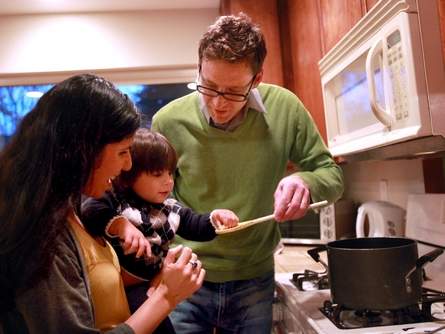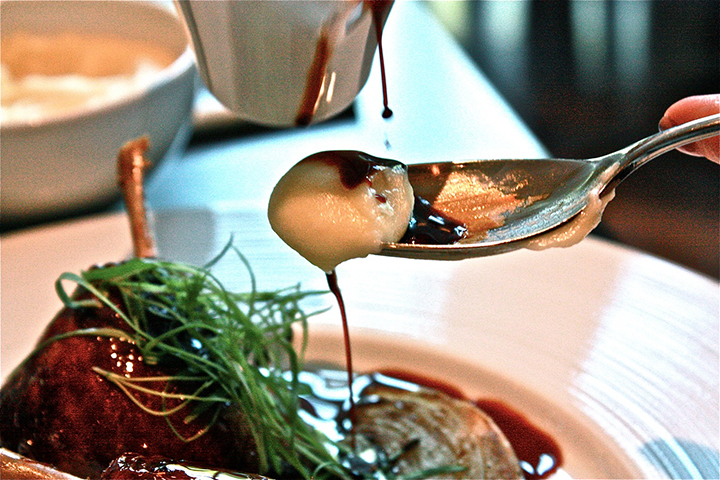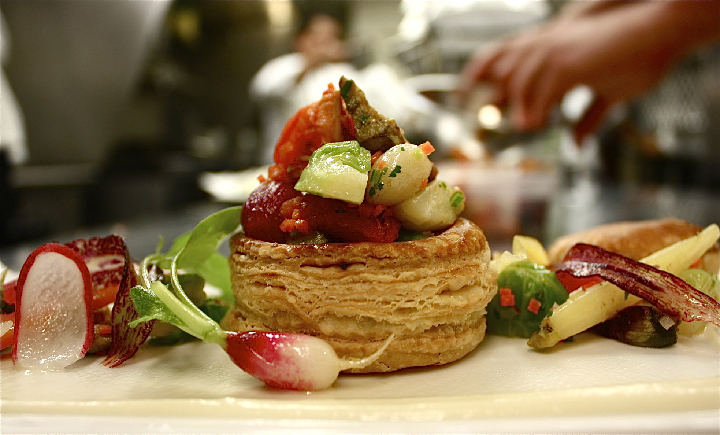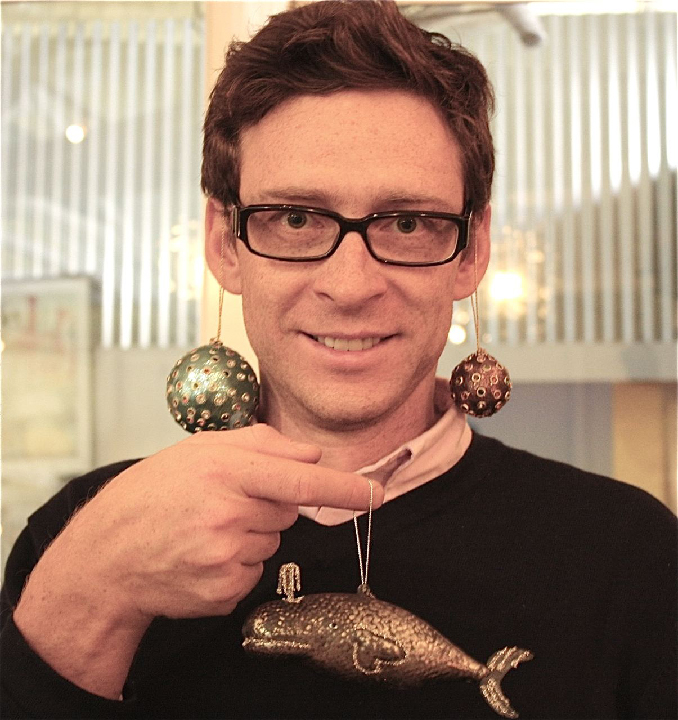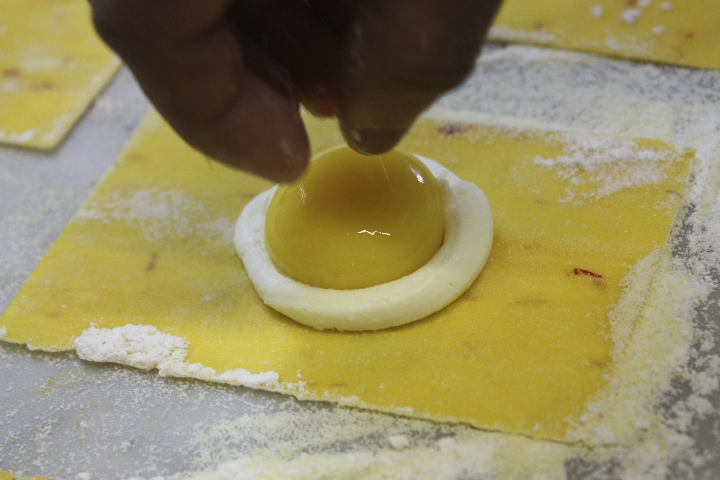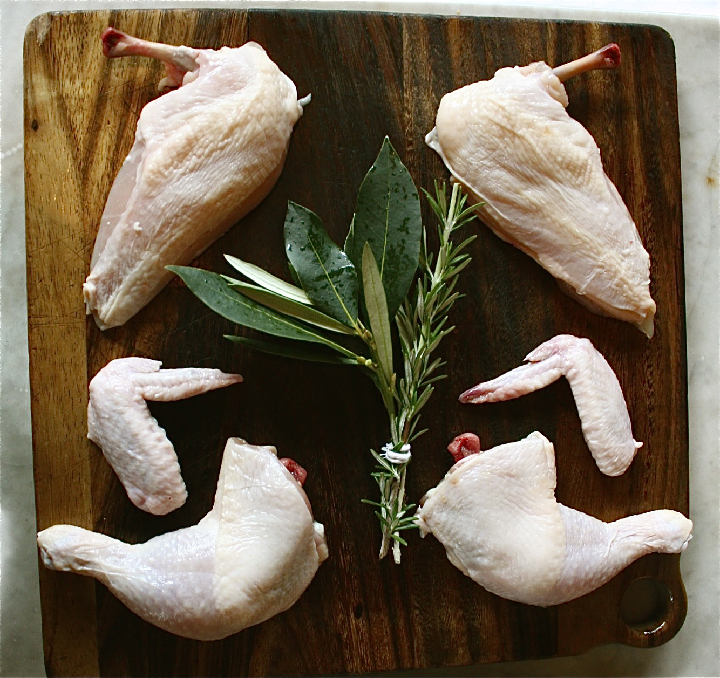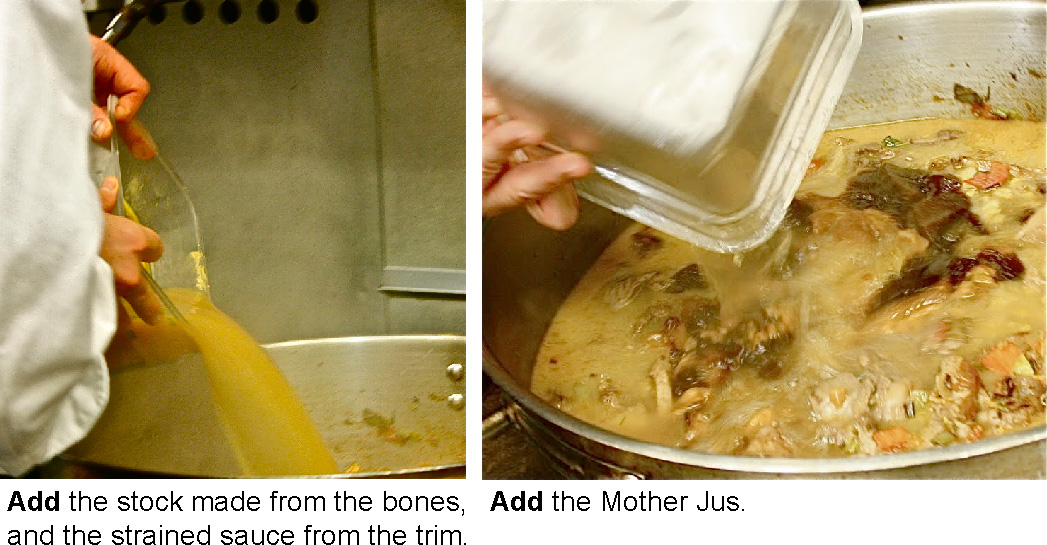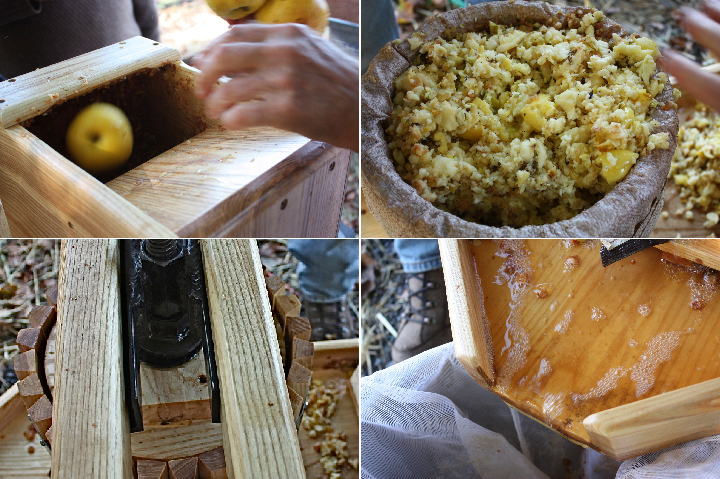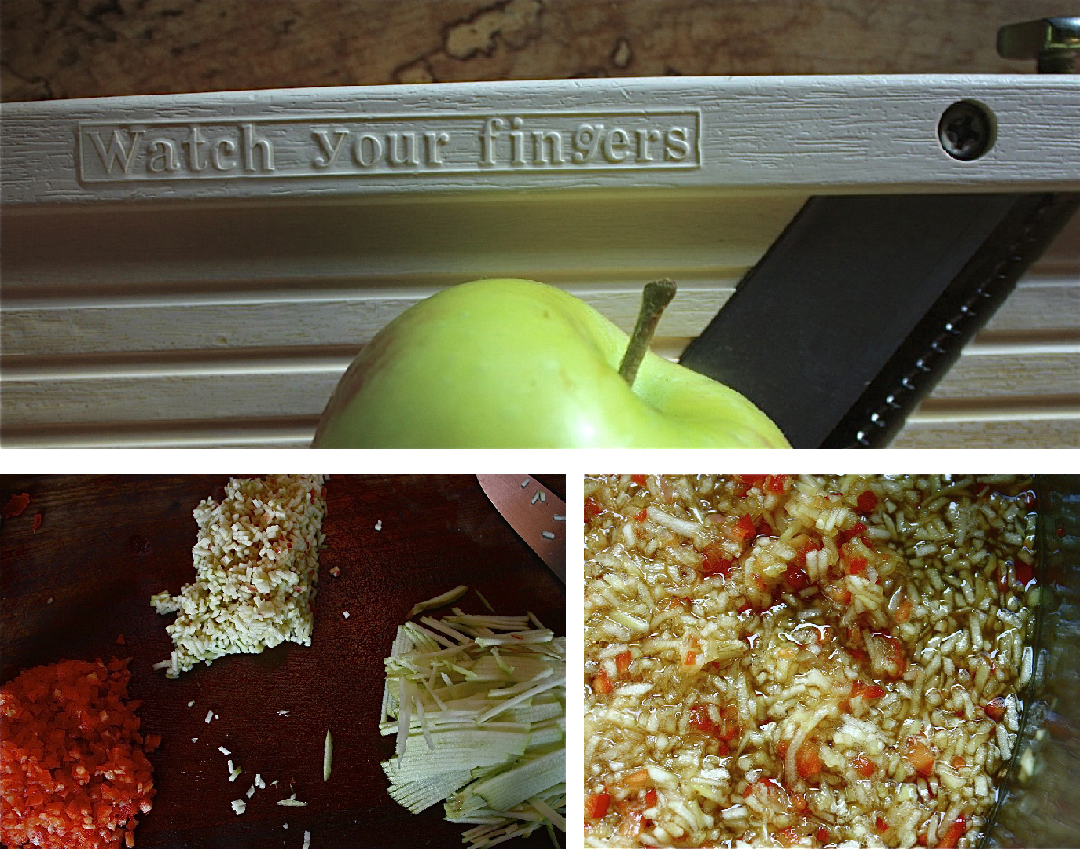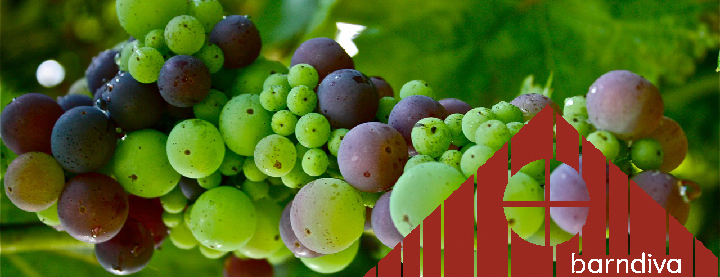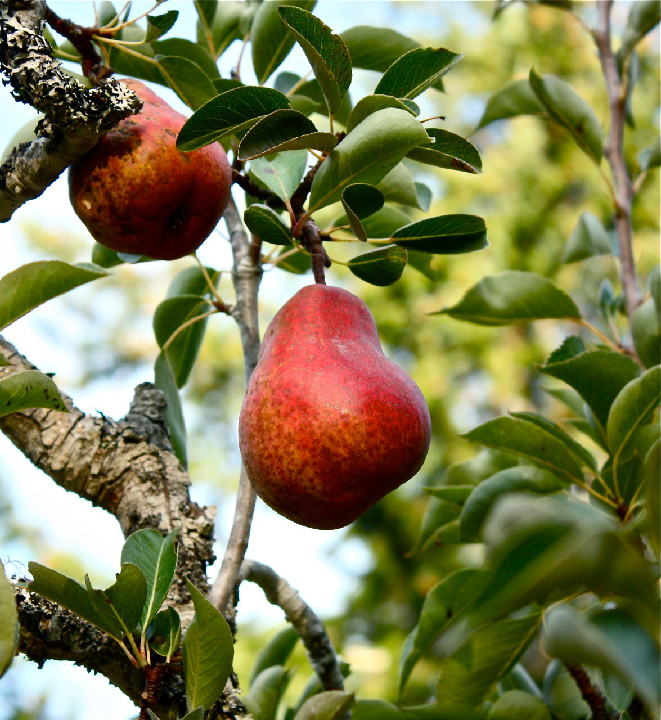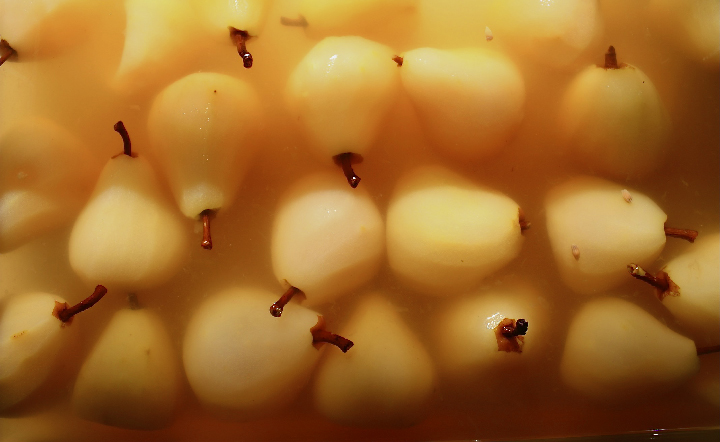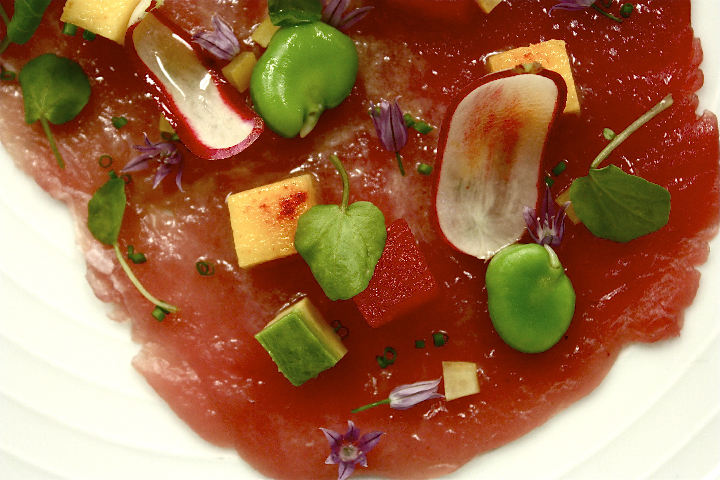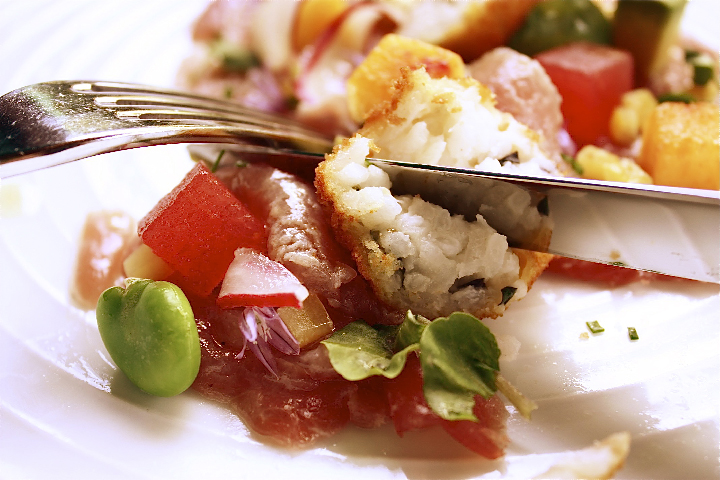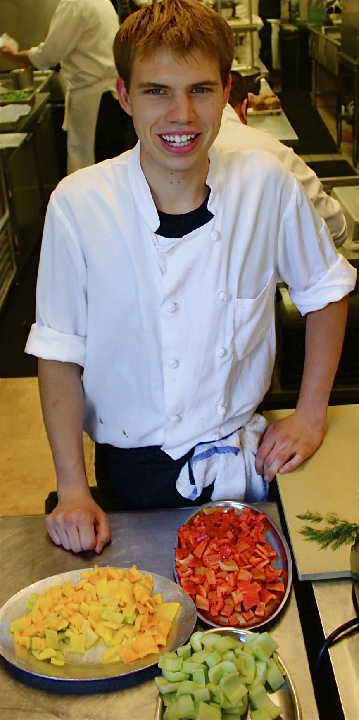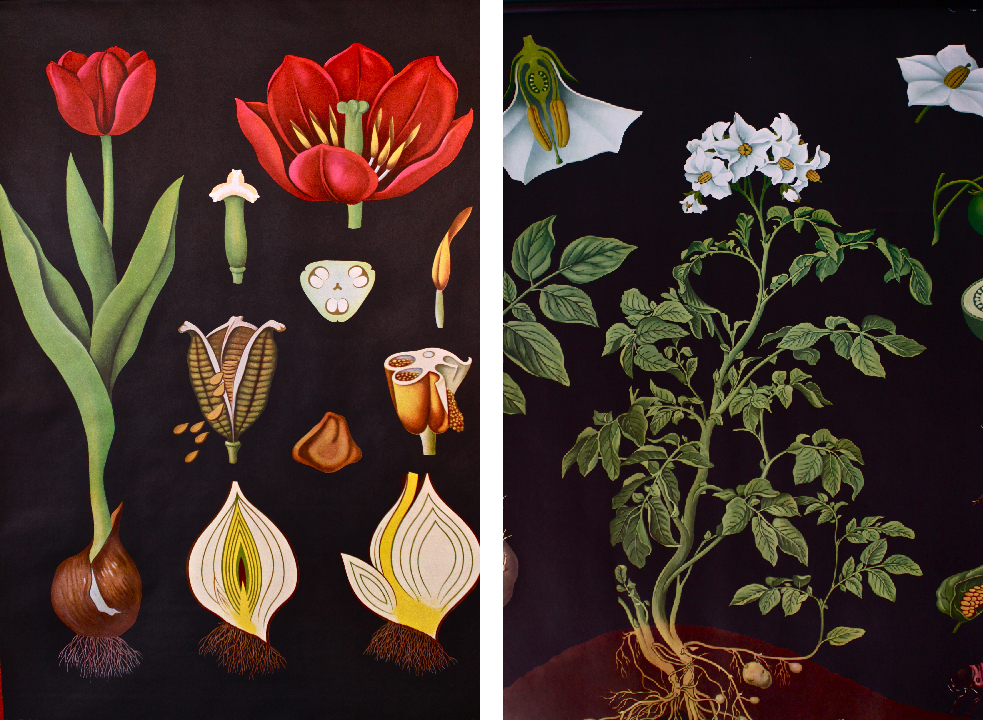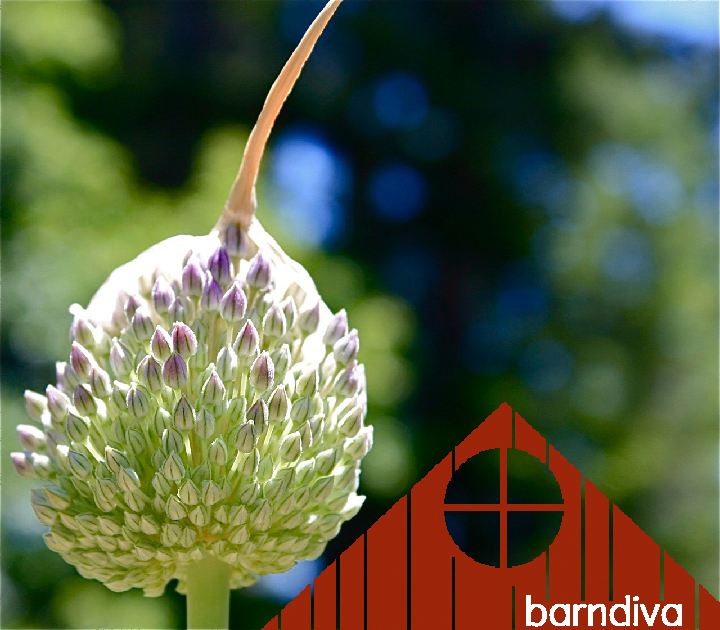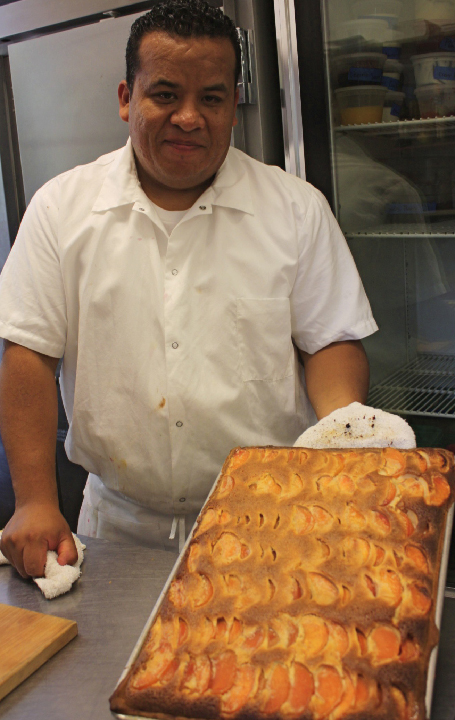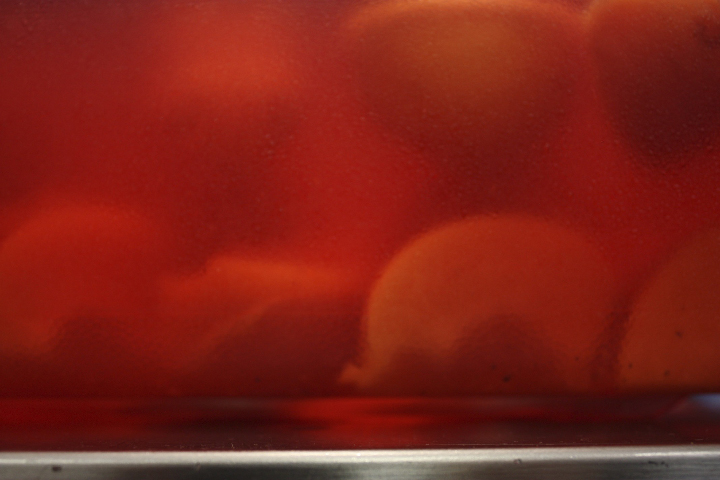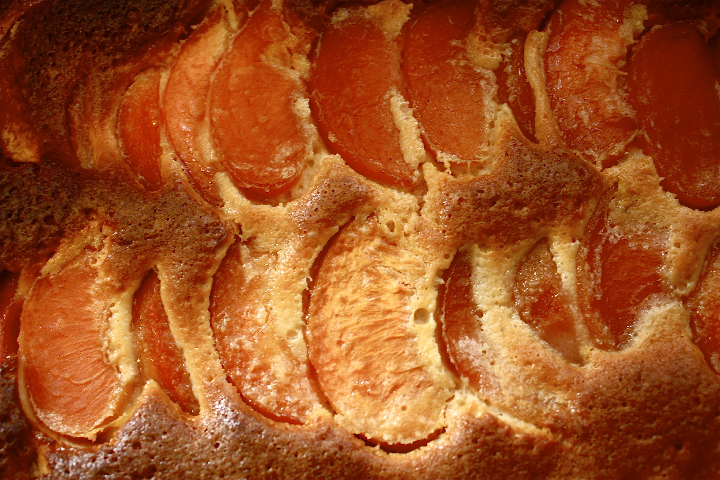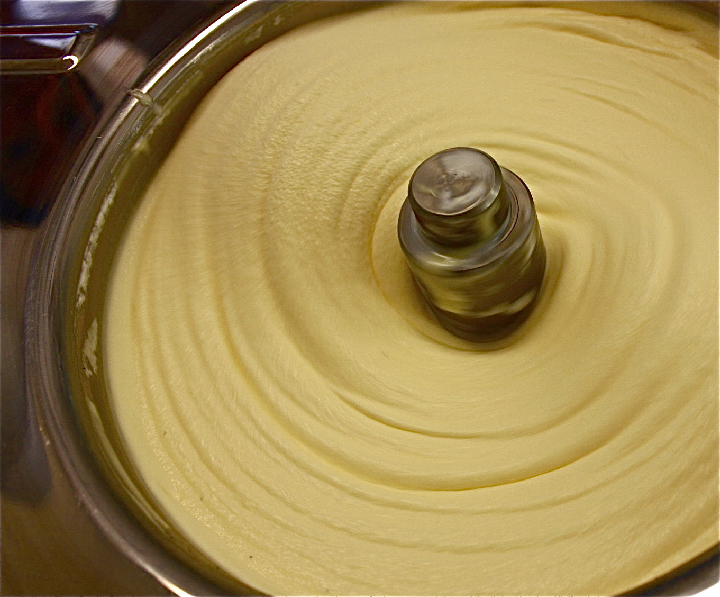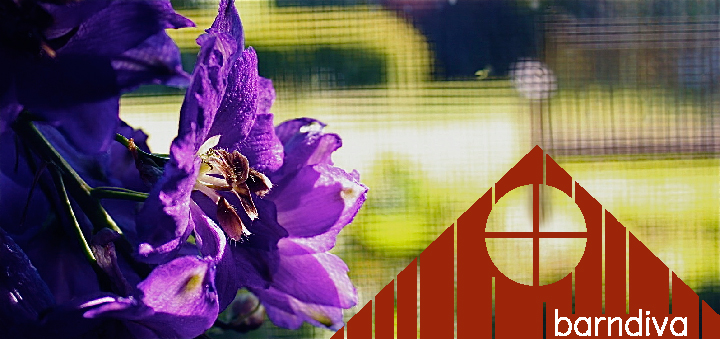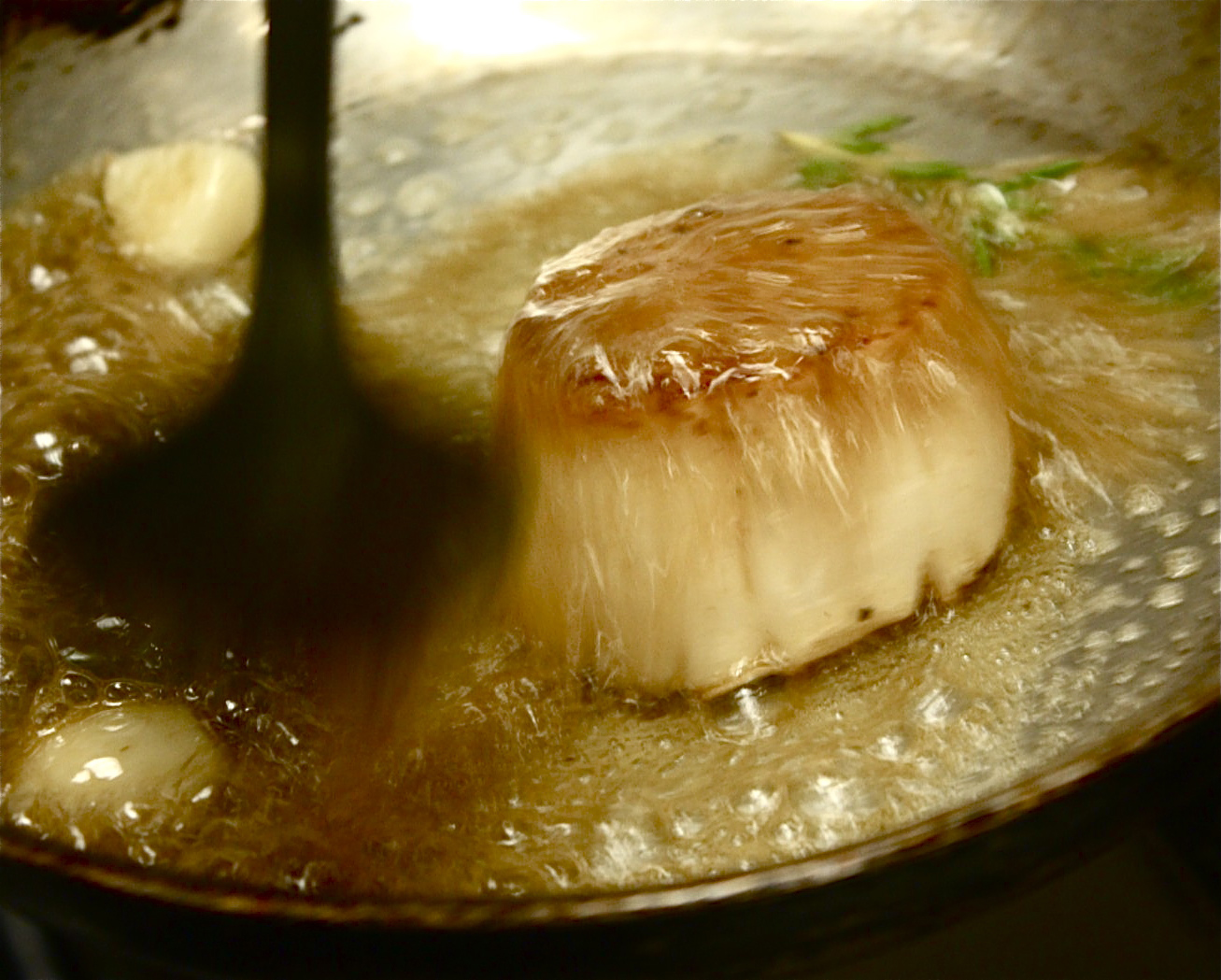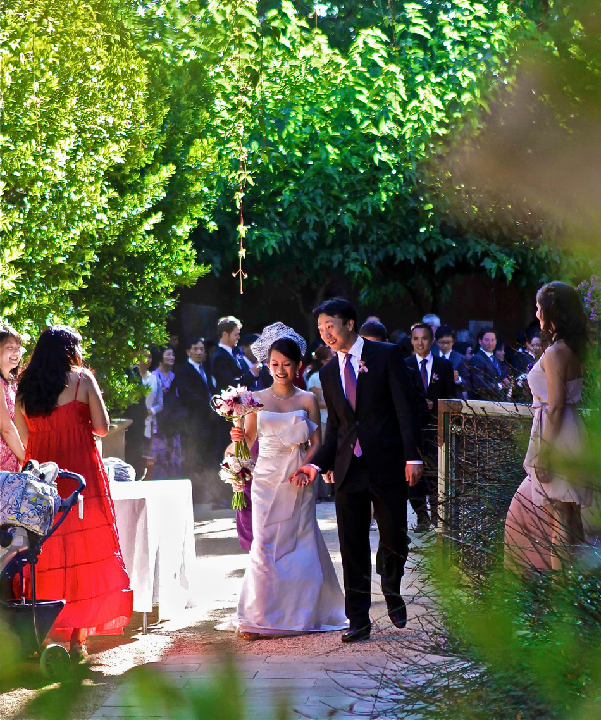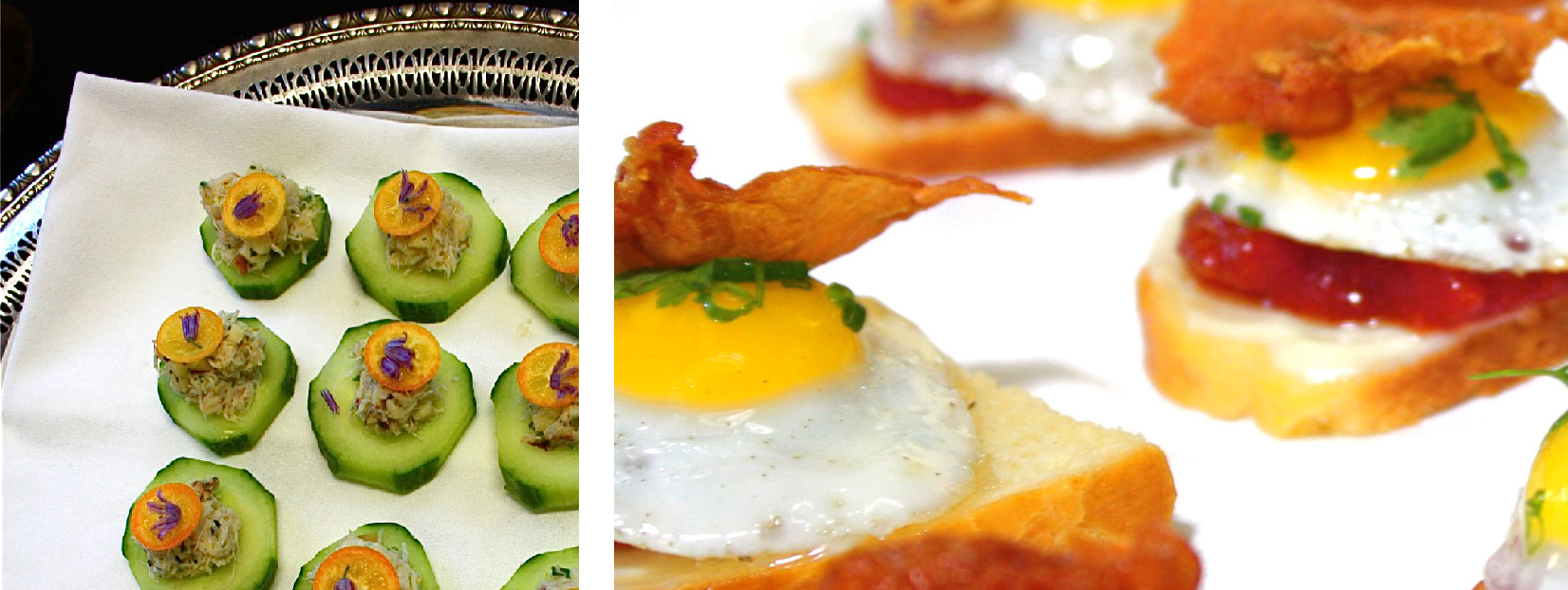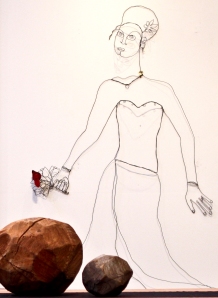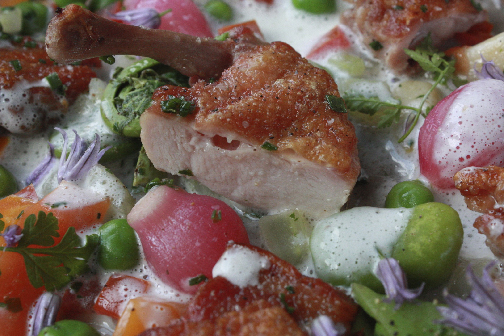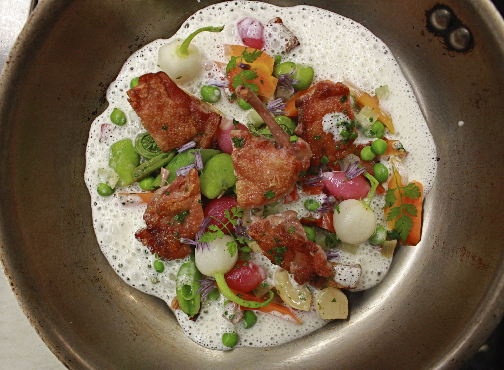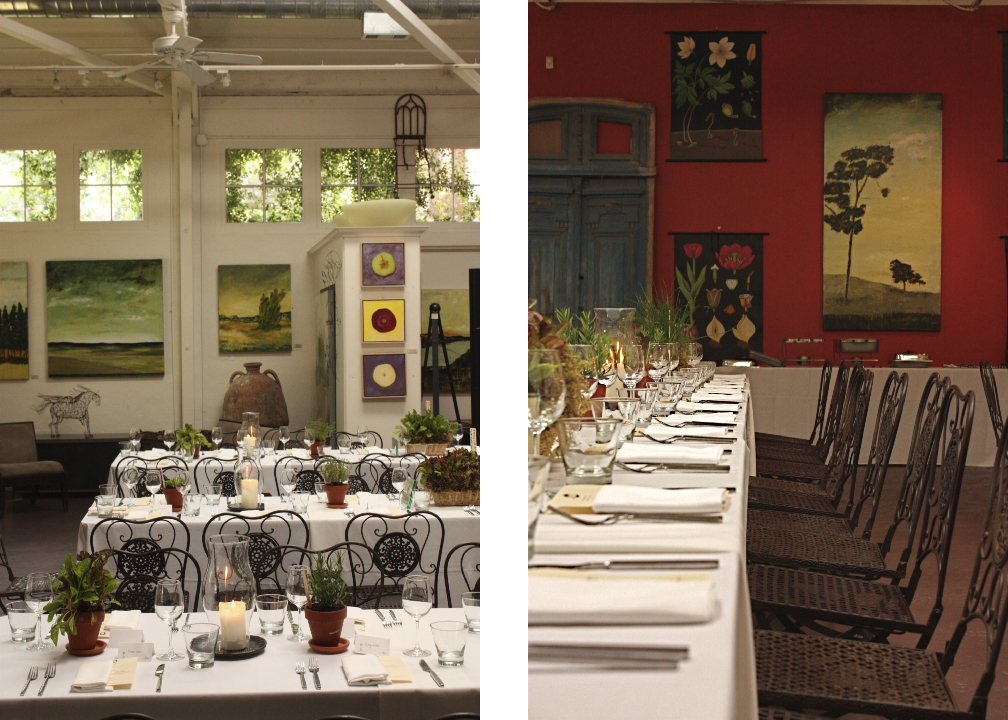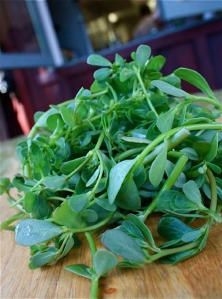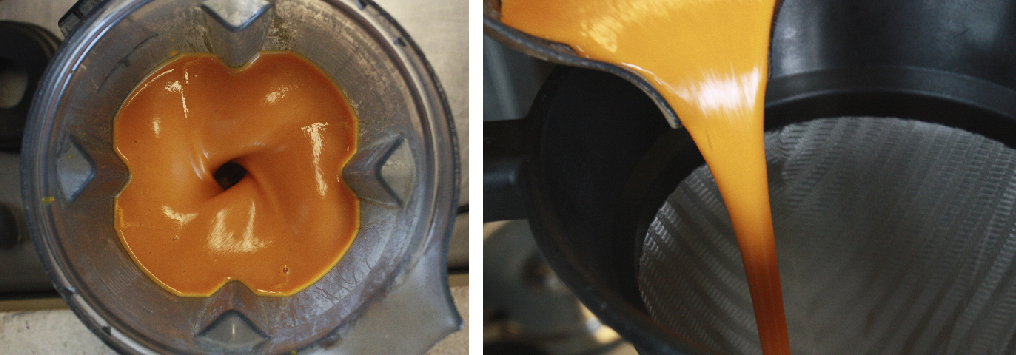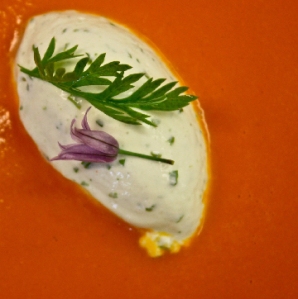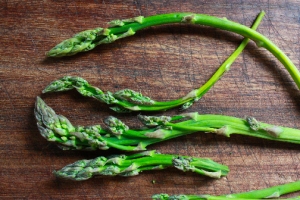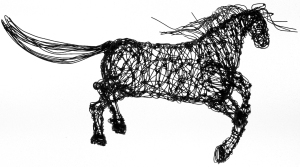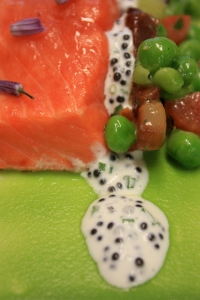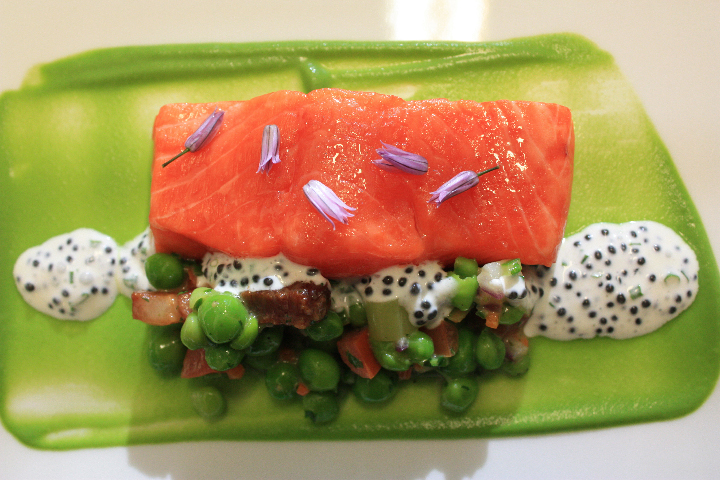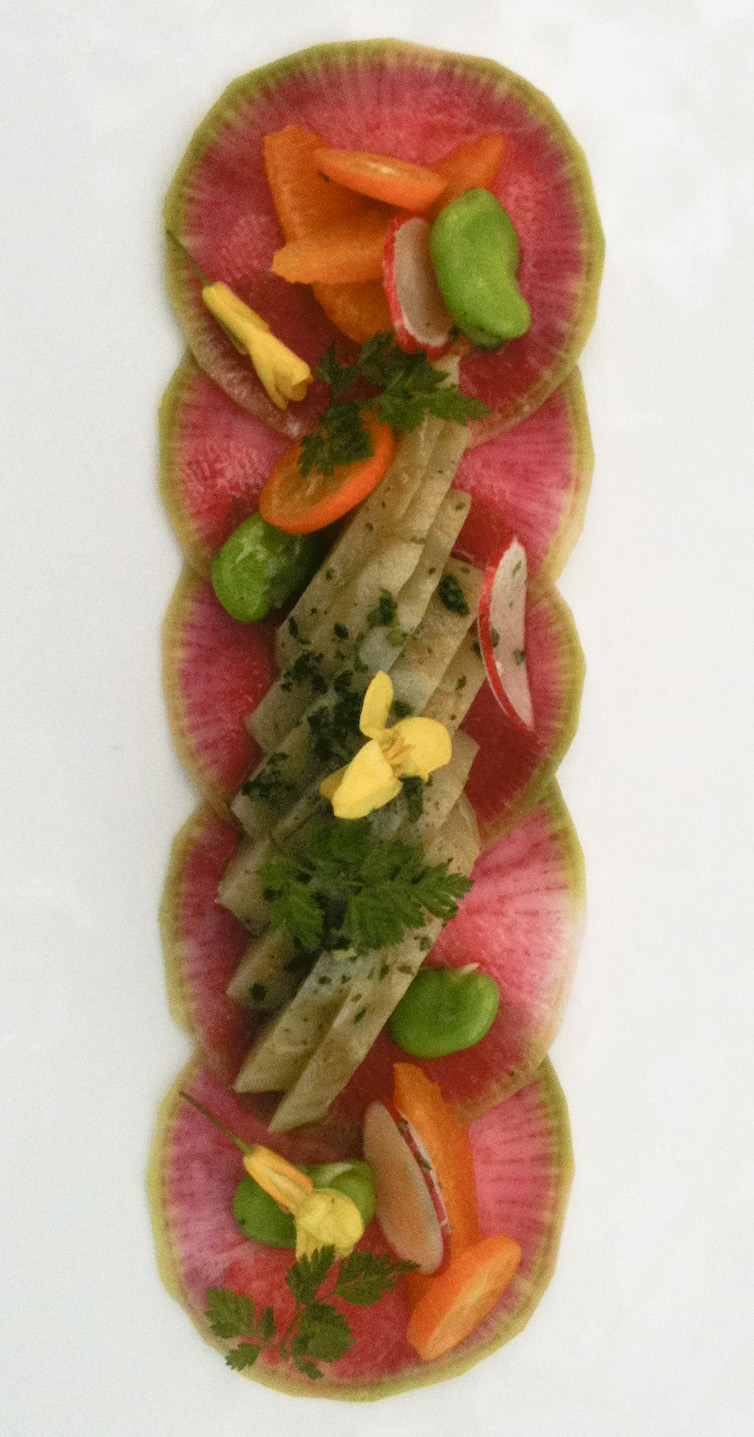Octavio's Pièce Montée
Octavio's gorgeous Croquembouche (aka pièces montée) garnered some of the biggest oohs and ahhs in a night filled with them on Friday as Healdsburg celebrated its annual downtown Christmas party. Festooned with hand-blown glass birds, swirling ribbons of spun sugar and topped with a Tin Mali Angel, while we may not agree with the great Carême that pastry is the highest form of architecture, Octavio was definitely channeling Gaudi when he created this baby.
 Pièces montées are architectural towers made of cream filled pastry, traditionally meant to be devoured piece by piece at the end of a special meal. Barndiva's was decorative only ~ hopefully we can keep it around for those of you who missed the party! What we can't recreate was the mellow mood of the friends and families who stopped by on their walkabout through town. There were platters of delicious Barn Chapeau (cream filled choux you could eat), lovingly decorated Christmas cookies and pitchers of Cosmo Killer Cocktails. Can't wait to see what our talented pastry chef has in mind for Christmas Eve when the holiday party traditionally moves next door to Barndiva. Stay tuned.
Pièces montées are architectural towers made of cream filled pastry, traditionally meant to be devoured piece by piece at the end of a special meal. Barndiva's was decorative only ~ hopefully we can keep it around for those of you who missed the party! What we can't recreate was the mellow mood of the friends and families who stopped by on their walkabout through town. There were platters of delicious Barn Chapeau (cream filled choux you could eat), lovingly decorated Christmas cookies and pitchers of Cosmo Killer Cocktails. Can't wait to see what our talented pastry chef has in mind for Christmas Eve when the holiday party traditionally moves next door to Barndiva. Stay tuned.
Great Articles Starring Two of Barndiva's Favorite Go-To Guys
Reading The Sunday Papers was especially sweet this weekend as we woke up to find two wonderful articles in the Press Democrat about remarkable men we get to work alongside every day. Chef Ryan Fancher's artful culinary prowess was the focus of the Jeff Cox restaurant review, accompanied by very cool photographs by Christa Jeremiason. While we were hardly unbiased when it came to the denouement, which we hope you'll read, whether or not you always ~ or ever ~ agree with his critical assessments every week, there's no denying Cox is a wonderful writer whose reviews are keyed to nuance and unusual details, not just about food. (He's certainly the first to get the visual synchronicity in the way we choose the John Youngblood's photography in the dining room).
Click here for the Jeff Cox review
Over in the financial section the cover story was all about how Studio Barndiva's Gallery Manager Dawid Jaworski is "living his dream" in America since immigrating from Poland. Everyone who works at Barndiva has fallen in love with this man and the infectious passion he brings to everything he touches.
Dawid's Amazing Savers Contest
And Don't Forget...
Dining Out For Life ~ Thursday December 1- countywide, a wonderful once a year event to support Food For Thought, which in turn supports the Sonoma County AIDS Food Bank.
Strolling Dine Around ~ December 7, 8, 14, 15- a chance to enjoy a delicious multi-coursed meal served at various restaurants across town, benefiting the Healdsburg Shared Ministries Food Pantry.
Great Gifts in the Gallery
 Yeah, well, it IS a great message for the times ~ Keep Calm and Carry On ~ but if there had been room on the ball we would have liked to add "and for Christ's sake, be joyful," because we mean it, literally. Joy is the spirit we hope the Gallery conveys this Holiday Season. Studio Barndiva may not have loads of shelves stacked with merchandise in multiples, but everything we do have is beautiful and meaningful, made with respect by artists and craftspeople who are upholding traditions we hope will survive these crazy times.
Yeah, well, it IS a great message for the times ~ Keep Calm and Carry On ~ but if there had been room on the ball we would have liked to add "and for Christ's sake, be joyful," because we mean it, literally. Joy is the spirit we hope the Gallery conveys this Holiday Season. Studio Barndiva may not have loads of shelves stacked with merchandise in multiples, but everything we do have is beautiful and meaningful, made with respect by artists and craftspeople who are upholding traditions we hope will survive these crazy times.
 Photography, ceramics, jewelery, lighting, furniture, textiles, paintings, sculpture, wine antiques, amphora, knives, books, CD's, glassware, vases, UK card collections, candles, puzzles, even hard to find bitters ~ The Studio has one hell of an eclectic collection of art and functional craft pieces we top up at Christmas time. With prices that range from the inexpensive ornament to a painting or sculpture you will treasure forever.
Photography, ceramics, jewelery, lighting, furniture, textiles, paintings, sculpture, wine antiques, amphora, knives, books, CD's, glassware, vases, UK card collections, candles, puzzles, even hard to find bitters ~ The Studio has one hell of an eclectic collection of art and functional craft pieces we top up at Christmas time. With prices that range from the inexpensive ornament to a painting or sculpture you will treasure forever.
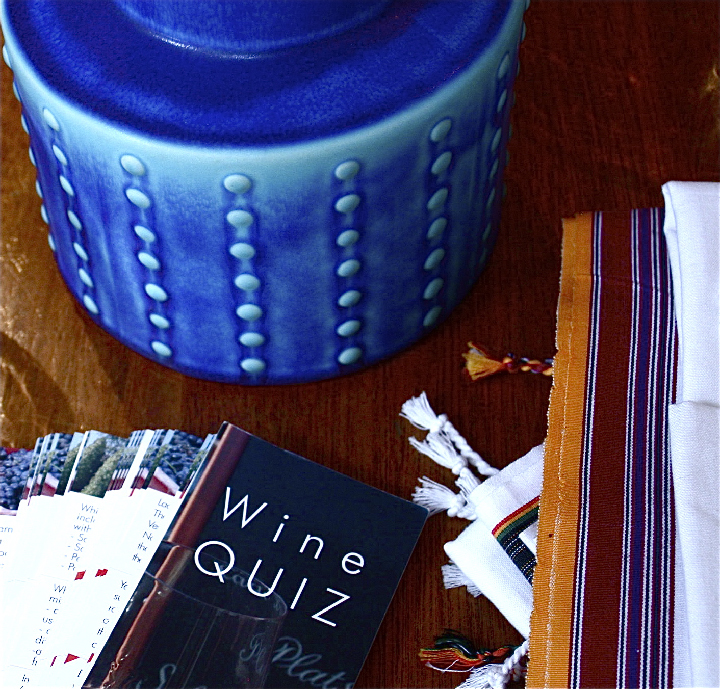 Support artists, artisans and local shops with a joyful, mindful, point of view this Christmas!
Support artists, artisans and local shops with a joyful, mindful, point of view this Christmas!
All text Jil Hales. All photos Jil Hales and Dawid Jaworski (unless otherwise noted).




